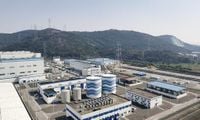China is accelerating its plan to build a satellite traffic management system, aiming to create a solid foundation for the long-term development of the commercial space industry. This initiative comes as the nation prepares for a significant increase in satellite launches, with projections indicating that low Earth orbit may soon be overloaded with approximately 100,000 active satellites.
In an interview with Jiemian.com, Meng Lingjie, Director of the Earth Observation and Data Center of the China National Space Administration (CNSA), emphasized the importance of this management system. He stated, "Our calculations indicate that low Earth orbit could face congestion with around 100,000 operational satellites." He further noted that without a proper traffic management system, overlapping and competing projects could severely hinder the development of the industry.
The Chinese government has pledged continued strong support for the commercial space sector, which is rapidly evolving. Currently, China operates 58 satellite factories, with additional facilities either under construction or in the planning stages. Industry data suggests that the country's annual satellite production is expected to exceed 5,000 units by the end of 2025.
One of the notable projects in this burgeoning sector is the G60 Starlink initiative from Spacecom Satellite Technology, based in Shanghai, which plans to deploy approximately 15,000 satellites. Of these, 648 satellites are expected to be placed into orbit before the end of 2025. Other significant projects include the Guowang Constellation from China Satellite Network Group, which aims to launch 12,992 satellites, and the Honghu-3 project by LandSpace, targeting 10,000 satellites.
To manage the anticipated surge in satellite numbers, CNSA announced the establishment of the Commercial Space Innovation Alliance on April 24, 2025. This alliance is designed to collaborate with industry organizations and businesses to address challenges such as resource allocation, establishing management standards, and improving coordination within the commercial space sector.
According to Meng, the primary goal of this alliance is to ensure the swift and safe development of the commercial space industry. He stated, "First, we need to transfer and apply the valuable experiences that state-owned enterprises have accumulated over decades—especially in rocket and satellite technology—into the commercial sector, to meet the rapidly growing demands of commercial space activities."
He added, "Secondly, we must meet the demands for rapid and flexible launches, allowing for large-scale networking and operations. Once satellites are deployed into orbit, it is crucial to avoid collisions, ensure service coordination between satellites, and maintain safe cooperation with satellites operated by international providers." Meng also revealed that national space agencies would guide commercial enterprises and are actively working to expand access to national testing facilities, which were previously reserved for government projects.
Additionally, the government is considering establishing public "sandbox" environments—specialized testing areas for high-risk commercial space activities. Here, national research teams will coordinate testing processes and quickly convert findings into practical resources to support commercial enterprises.
In a related development, China's nuclear power sector is also making headlines. According to the China Nuclear Energy Development Report 2025 released by the China Nuclear Energy Association (CNEA) on April 27, 2025, China has now become the world leader in total nuclear power capacity for the first time. However, the United States still holds the lead with 94 operational reactors, while China operates 58 reactors.
In 2024, China's cumulative nuclear power generation reached 444.7 billion kWh, accounting for 4.72% of the country's total electricity production and positioning China as the second-largest producer globally. This shift has contributed to a significant reduction in annual CO2 emissions, estimated at approximately 334 million tons.
As of the end of last year, China had 28 reactors under construction and has led the world in installed capacity of reactors under construction for 18 consecutive years. The CNEA report indicates that if construction continues at the current pace, China's installed capacity of operational reactors will surpass that of other countries before 2030.
In a notable achievement, China has successfully localized 100% of the main equipment used in nuclear power plants. In 2024 alone, the number of domestically produced main equipment delivered reached 114 sets, doubling the figure from 2023.
Cao Shudong, Executive Vice President of CNEA, remarked that China's independent research and development efforts continue to make significant breakthroughs. The first unit of the Guohe One project, a major national science and technology initiative, has been completed and is now operational. Meanwhile, the Linglong One project is expected to be completed and operational by 2026.
The report also highlights China's ongoing progress in international cooperation, including enhanced exchanges and coordination with the International Atomic Energy Agency (IAEA). Collaborations on nuclear power with Russia, France, and other nations have also deepened.
As global nuclear energy faces challenges such as climate change, energy security, and increasing electricity demand driven by the expansion of data centers, the industry is entering a new phase of development. Dong Baotong, head of the National Nuclear Safety Administration of China, noted that the country's nuclear power sector has reached a peak in large-scale construction and must ensure the safe operation of reactors.
China has implemented a long-term strategy for nuclear power development since 2011. According to the Energy Research Institute under the National Development and Reform Commission (NDRC), to achieve carbon neutrality, the proportion of nuclear power in China's energy mix must increase to 28% by 2050, up from just 5% in 2022. This translates to a significant increase in nuclear capacity, targeting 554 GW by 2050.




